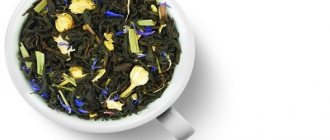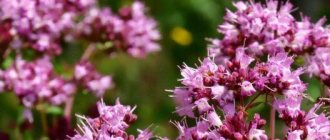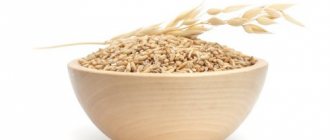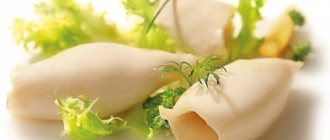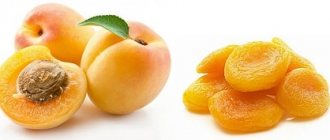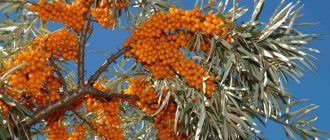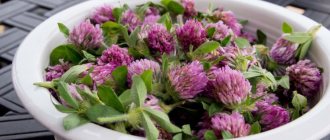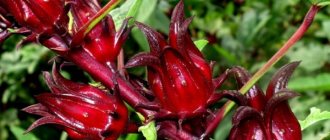Monastic tea (collection) is a unique set of herbs that have healing properties. The composition of this collection is balanced and has a fairly broad effect on the human body. Since ancient times, monks have been growing and collecting medicinal plants, making various infusions from them and using them to treat ailments. The monastery tea contains herbs that can be used to support and strengthen the body in the presence of serious illnesses, speed up recovery, and avoid complications. The components of such a drink do not undergo special processing; they go on sale in their pure, natural form. As a rule, the use of such an infusion does not cause side effects, and the occurrence of allergies is also unlikely.
Truth or scam?
Monastic tea has become widely known recently. Currently, more and more people are using traditional options for treating diseases. One of these options is the monastic collection of herbs.
The composition contains dried plants and herbs, which have very healing properties and have a beneficial effect on the entire body as a whole. There is quite a wide variety of types of this tea, each of which helps in the treatment of a specific disease. The composition can contain completely different types of herbs, but at the base you can often find chamomile, burdock, pine needles, rose hips, dandelion, St. John's wort. Sometimes the composition may include berries and other natural ingredients. All these components have long been known and widely distributed, they contain nutrients and can provide significant assistance in the treatment of the disease. It has long been proven and tested that many herbs help strengthen the immune system, remove toxins and harmful compounds from the body, reduce inflammation and much more. Those. Such tea will definitely not do any harm, but on the contrary, it will help cope with many health problems.
Unfortunately, nowadays quite often people come across fakes. Monastic tea is no exception. Manufacturers offer tea, which is significantly different in composition from that of the monastery, but they claim that their collection is the real one. And the price, as a rule, for such a fake is quite high. The counterfeit packaging does not contain any ingredients, does not indicate the place where the plants were collected, and there is no description of the healing properties. Scammers often claim that the tea they offer was collected in ecological places over which prayers were read daily. This is a lie. A person can easily be sold tea of unknown origin, which can also cause harm. Therefore, it should be understood that such tea should not be purchased in pharmacies, not through the Internet or intermediary companies, but precisely where it is collected and packaged - in monasteries or churches. This is where the name of the tea comes from. What is offered in other places is a real scam.
The most important thing is that you need to approach the use of monastery tea wisely. It is not a cure for diseases; when taking it, you cannot refuse full-fledged traditional treatment. It serves as a useful adjunct to primary therapy. Tea is not able to completely heal the body from the disease, but will only support the body or promote a speedy recovery.
Kinds
First, let's try to identify all the types of monastery tea that can only be found on the Internet. You can't even imagine their diversity. Perhaps we missed something, but in total we managed to find 28 collections under this name. Moreover, they are all different in their effect on the body and composition. Here is the list:
- For vision.
- For weight loss.
- For the thyroid gland.
- Gastric.
- From alcoholism.
- From varicose veins.
- From hepatitis.
- From female infertility.
- From mastopathy.
- From male infertility.
- From osteochondrosis.
- From parasites.
- For prostatitis.
- For pimples, blackheads and acne.
- From cancer.
- For hypertension.
- From thrush.
- From sweating.
- For psoriasis.
- For diabetes.
- For stomach ulcers.
- Hepatic.
- Renal.
- For allergies.
- For gastritis.
- During menopause.
- Anti-smoking.
- Cordial.
It’s worth making two caveats right away. First, we do not guarantee that this list contains every species that can be found for sale. Secondly, here are herbal collections for the treatment of certain diseases. If you need something for the whole body at once, see Father George’s famous monastery collection of 16 herbs.
History of appearance
Some legends say that the invention of monastery tea belongs to monks who lived in Belarus in the 16th century. Life in monasteries at that time was quite difficult, the monks engaged in hard physical labor every day and observed strict fasts. To support the body, give it more strength and fight diseases, they collected unique medicinal plants and brewed tea. Due to the certain specificity and asceticism of life in monasteries, grass was collected from a nearby forest or field. Today, many monasteries have a plot of land that is used for monastic needs, including growing medicinal plants for making monastic tea.
There is another opinion that for the first time the composition for the monastery healing infusion was compiled and then prepared in 1430 by clergy in the Solovetsky Monastery (it was also called Spaso-Preobrazhensky), which was located on islands in the White Sea. The real recipe for this tea was even written down in the special charter of the monks. It has not survived to this day, but they say that it contained only those herbs that grew exclusively in the island part of the White Sea.
Composition of herbs and plants
The most universal type of tea in terms of healing properties is considered to be restorative monastery tea. It has the ability to have a healing effect on all organs and systems of the human body, supplies vitamins to the body, is able to restore cells, strengthens the immune and endocrine systems, supports the gastrointestinal tract, and eliminates minor problems in the musculoskeletal system.
The composition of the monastery tea includes the following components:
- Elecampane. A very good antiseptic, eliminates inflammation of various types and tones. Has powerful expectorant and diuretic effects.
- Sage. Has bactericidal qualities. Gives monastery tea a delightful aroma.
- Oregano. Helps restore the liver, increases appetite, and eliminates insomnia. It has a beneficial effect on the gastric mucosa and the nervous system as a whole. Normalizes metabolism, improves digestion. It has calming and tonic qualities.
- St. John's wort. It is an excellent antidepressant, improves mood and eliminates insomnia.
- Rose hip. Strengthens and increases the level of immunity, slows down aging, it contains vitamin C in large quantities.
- Fireweed. This herb contains microelements beneficial to the body, has an antiseptic and cleansing effect, gives energy, and improves mood. Helps cope with diseases of the esophagus.
In addition, the collection contains a number of elements and chemical compounds useful for the body, namely:
- Polyphenolic compounds. They have a positive effect on blood pressure, increase the elasticity of blood vessels and prevent varicose veins.
- Antioxidants. Effectively destroy harmful substances - free radicals, and also protect the body's cells.
- Tannins. They have a powerful anti-inflammatory effect.
- Polysaccharides. They have a positive effect on brain activity and also normalize blood sugar.
- Tannin. Tones the body, improves memory and attention.
- Microelements and vitamins. They have a positive effect on the entire body as a whole.
- Essential oils. They have bactericidal and relaxing effects.
Benefits for the body
Monastery tea has a number of beneficial properties. Within a few days from the start of use, you can feel the positive effect, and with regular use, you will notice a noticeable improvement in your overall condition. The benefits of the infusion are as follows:
- Feeling better, energy levels and stamina increase.
- The state of the gastrointestinal tract is normalized.
- The immune system increases and strengthens, the body becomes more resistant to many diseases.
- Calms the nervous system, prevents stress, normalizes sleep.
- Metabolism improves.
- It has an antiseptic effect and helps the body fight inflammatory processes.
- Stabilizes blood sugar
- Blood pressure normalizes and the risk of hypertension decreases.
- It has a positive effect on the functioning of the kidneys, effectively removes sand, and prevents the appearance of stones in the gall bladder.
- Tea has a diuretic effect, which helps cope with bacterial infections of the genitourinary system.
- The body is cleansed of harmful substances, toxins and waste, as well as the circulatory system.
Monastery tea is also used to prevent the development of various diseases, such as:
- Various oncological diseases.
- Ulcer of the stomach and duodenum.
- Dysbacteriosis is a disorder of the intestinal microflora.
- Pancreatitis – inflammation of the pancreas
- Kidney and liver diseases.
- Bronchial asthma.
- Prostatitis.
- Cardiovascular diseases. Tea can prevent heart attack, angina, ischemia, and blood clots.
- Joint pathologies.
Harm and contraindications for use
Monastery tea is an absolutely natural product, it contains only herbs. Therefore, it has practically no contraindications. But each person has his own individual characteristics, so before starting to drink this tea, it would be a good idea to consult with your doctor. There are several situations when drinking monastery tea is not recommended. Such situations include the following:
- Allergy to one of the tea components. Although tea contains mainly herbs that are not capable of causing allergies, intolerance may occur. The main symptoms of this condition may be: swelling, headache, rashes and itching. People prone to allergic reactions are advised to try the tea in small quantities first. If no adverse reactions occur, then the tea can be consumed in full.
- It is not recommended to drink monastery tea during pregnancy. Certain types of herbs can lead to miscarriage, as well as possible fetal pathologies.
- It is also not recommended to use the infusion during breastfeeding. In this case, the child is transferred to artificial formula.
Getting rid of acne
Thanks to monastery tea, you can successfully cope with acne. Not every person realizes this, but the product acts gently and effectively. In this case, you can use the composition for both internal and external use.
Advice! After drinking the drink, you do not need to immediately throw away the tea leaves; you can use it for washing. It is necessary to pour a small amount of boiling water over the remaining tea and leave until the infusion has cooled completely. Next, it is recommended to cleanse the skin with a decoction before going to bed.
Cooking at home
The infusion can be prepared at home. Of course, it will be different from the one purchased in the temple, but the healing properties will not be lost from this. The composition includes five ingredients: elecampane (root), St. John's wort, rose hips, oregano, black or green tea. All ingredients can be purchased at any pharmacy and markets. There are three main cooking recipes.
Classic recipe
- Mix all components, maintaining proportions.
- Take 15-20 g of the mixture, pour it into a kettle and brew it with a glass of boiling water.
- Wrap the kettle well in a warm cloth and let it brew for about 30 minutes.
- Ready tea must be consumed immediately and cannot be stored. Adding sugar or jam is allowed.
Cooking in a water bath
Cooking for this recipe takes a little longer than the classic one. But there is a significant advantage - you can drink this tea throughout the day.
- First you need to combine 20g of rose hips and 20g of elecampane.
- Add a liter of boiling water to the resulting mixture. Keep in a water bath for 30-35 minutes.
- Next, add the remaining components (20g each, add 10g of tea) and leave for another 40 minutes.
Before drinking, you need to dilute the tea leaves with water. Adding sugar is also allowed.
Recipe from the Solovetsky Monastery
This recipe uses additional ingredients: lemon, dandelion, ginger, burdock, horsetail and honey.
- You need to take 5g of burdock, dandelion and horsetail (brew each herb in separate containers), add 50 ml of hot water for each type, bring to a boil, stirring constantly.
- After boiling, remove from heat and set aside for 2 hours.
- After two hours, you need to strain and combine everything.
- Add lemon juice (from half a lemon), 20 g of ginger and 10 ml of honey to the resulting mixture.
- You can drink tea after about half an hour.
How to brew monastery tea
The effectiveness of a healing drink is directly dependent on how correctly it is brewed. To do this, it is recommended to follow the following sequence of actions:
- To brew 1 cup of tea you need to take 200 ml of liquid 1 tsp. herbal collection.
- Bring water to a boil and let it cool to a temperature of 95 degrees.
- Pour the tea leaves into a ceramic or glass bowl.
- Pour hot water over the contents and cover the dish with a lid. It is important to pay attention to the fact that it is necessary to ensure the air circulation process.
- Let the drink brew for 20-30 minutes, and then strain the tea.
- To give the drink a special taste, you can add lemon or honey.
Tea can be consumed both warm and cold. The drink can be brewed for each meal separately or for the whole day at a time. Do not forget that for herbal teas it is important to obtain the correct extract from the herbs, which is only possible if the brewing technology is followed. Reheating an already prepared drink is not recommended.
How much to drink - treatment
Although monastery tea is a natural product, there are still a few simple rules for its proper use. By following simple recommendations, you can get the maximum benefit and achieve the best results in strengthening and improving your health.
- You should drink monastery tea no more than 2-3 times a day.
- The course of treatment lasts one month, followed by a break of three months. After this period, the treatment is repeated.
- You need to drink a healing drink in combination with a diet prescribed for a specific disease. Alcohol is completely excluded during this period.
- It is necessary to maintain a positive attitude and believe in the healing power of the drink.
- You should not stop taking it prematurely, even if you do not get the desired immediate result. The effect of use may appear after some time.
- You can add honey or lemon to the finished drink, this will only enhance the healing effect.
Where to buy profitable
You can profitably order a certain type of medicinal tea only from an official seller. Advantages of purchasing through the official website:
- purchasing a certified product;
- delivery to any address in the Russian Federation;
- no prepayment. The goods are paid for upon receipt of the parcel at the post office;
- free consultation when placing an order.
How to order tea:
- go on the website;
- fill out the application form, indicating your name and phone number;
- Wait for the manager to call to agree on the details of the order.
Choose and order the desired type of tea from the rich assortment presented on the official website.
Go to the official website
Storage
It is necessary to understand that the medicinal properties of monastery tea directly depend on how and where it is stored. Therefore, this issue must be approached responsibly, so as not to be disappointed later in the lack of the expected effect. Proper storage of herbal collection implies the following:
- It is necessary to store strictly in a dark, dry and cool place, the most suitable temperature is 15-20 degrees. When exposed to light, the collection loses its color, a foreign odor may appear, and its properties will be lost. Humidity is also unacceptable; this is an ideal environment for the development of bacteria and mold;
- the storage container should close well, should not be transparent, it is better to use ceramic dishes, do not use plastic jars or plastic bags;
- After opening the package, the tea is suitable for consumption for three months. The shelf life in unopened packaging is unlimited.
Share with your friends
